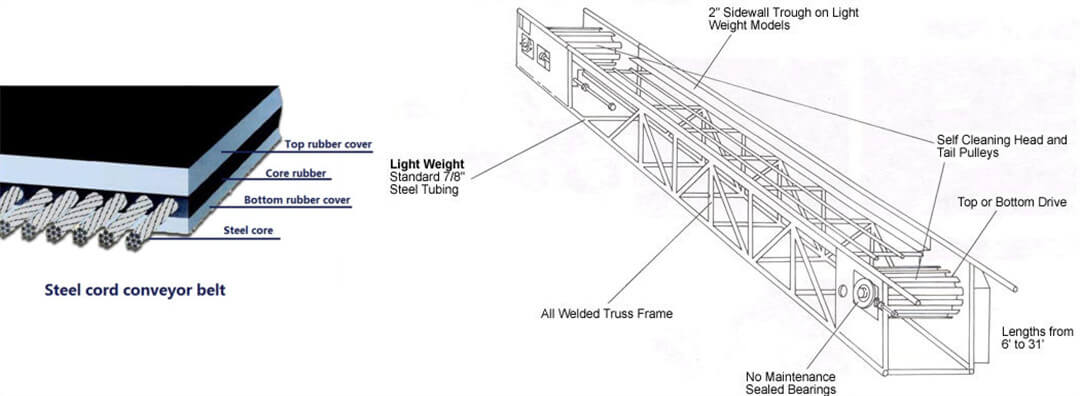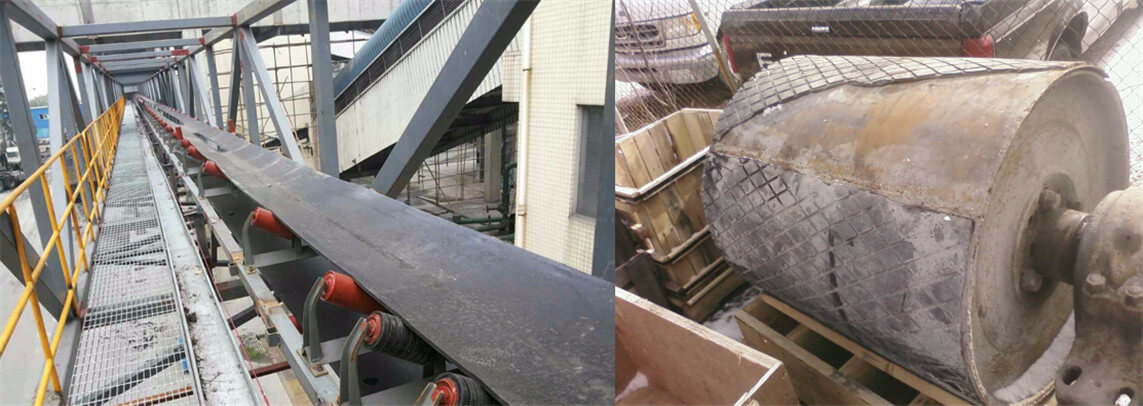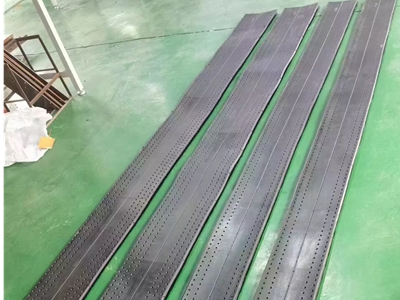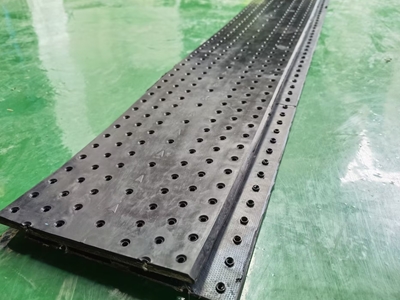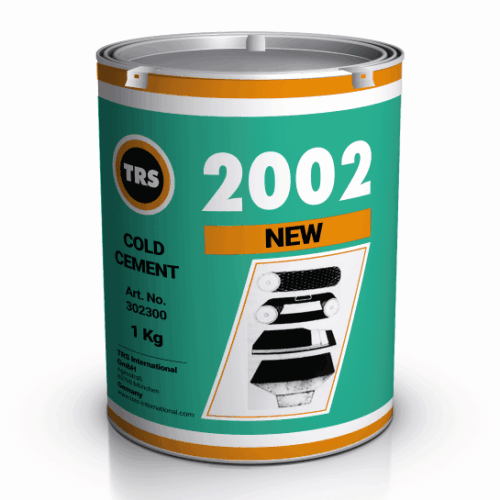The emergence of trough belt conveyors fundamentally changed industrial processing, improved efficiency, reduced labour requirements, improved safety, and streamlined production. It is common to find these flexible devices in virtually any industry to move objects around.
Although belt conveyors provide a reliable and efficient material bulk-handling solution, they may encounter occasional problems. When problems arise, they can cause serious damage to the production line. The following are some of the most common problems when working with belt conveyors, including what causes these problems and how to prevent them.
Note: This is not a comprehensive list, nor can it replace the expertise of professionals. Consult your original equipment manufacturer or manual frequently to ensure that all necessary safety, maintenance, and troubleshooting guidelines are followed. Maintenance and storage procedures should always be performed by trained professionals.
1. Problem of CARRYBACK
Conveyor belts are the material left on the conveyor belt after unloading. This is probably the most common struggle between conveyor operators. Generally speaking, all conveyor belts have a certain degree of return experience, but considering its potentially serious consequences, it is vital to keep it to a minimum.
1.1 Why is it a problem for carryback?
When it enters the area around the landing gear and conveyor belt, it creates a chaotic and potentially dangerous working environment. This may cause downtime and increase the time spent on cleaning and maintenance.
Not only does handling cause confusion, but the material allowed to accumulate on rollers, idlers, and pulleys will reduce the quality of these components and cause excessive wear. In addition, the increase in straps can also cause belt tracking problems, which may wear and damage the belt.
1.2 What causes the Carryback Problem?
The characteristics of the conveyor belt and the tendency to stick to a large extent determine the return journey. Generally speaking, materials with higher moisture content are more likely to stick to the belt. Similarly, in a humid environment, the hygroscopic material will absorb moisture from the air, increasing the possibility of sticking to it, so carrying it will be more problematic.
Due to the extreme temperature difference between the material and the belt, bonding can also occur when condensation occurs.
1.3 How to prevent being carried
The best way to prevent straps is to use one or more belt cleaners. Using the belt cleaner, any unwanted material that might stick to the conveyor belt can be removed by putting it on the head wheel or the tail wheel. Depending on the amount of material to be carried and the type of device, these devices greatly reduce accumulation on the conveyor belt. There are various options, including self-cleaning tail pulleys, v-ploughs (return side belt cleaners), and dual belt cleaners.
A conveyor belt maintenance plan should also include routine cleaning to minimize residue on components.
2. Conveyor Belt Mistracking
Conveyor belt mistracking refers to the way the conveyor belt runs on the rollers. The conveyor belt should always be in the center position. When the conveyor belt moves unevenly on the idler, one side is inclined and the other side is inclined, mis-suction will occur.
Materials are transported centrally on this properly trained our belt conveyor
2.1 Why It is a Problem for Mistracking?
Just like handling, wrong handling can cause some problems in the transportation system. This includes uneven belt wear, belt damage due to contact or rubbing against surrounding infrastructure, material spillage, bent belts or uneven belts, and more.
Misoperation has also been identified as a safety violation by the Mine Safety and Health Administration (MSHA) of the U.S. Department of Labor. When the belt is not tracked correctly, the normally safe area may become a pinch point, posing danger to workers. Mishandling may also cause materials to fall off the conveyor belt, fall on workers and equipment, or produce piles, posing a safety risk.
2.2 What is the reason for Mistracking?
Since the conveyor belt alignment is carefully balanced, any number of factors can be the source of the error, making it difficult to determine the source of the problem. Potential causes of errors include improper roller spacing, stuck or worn rollers, misalignment of the frame, accumulation of material on any part of the conveyor, excessive belt tension, and worn or damaged belts, etc.
2.3 How to Prevent Conveyor Belt Mistracking?
The range of possible causes of false bites makes the prevention of blanket solutions impossible. However, there are some measures that can help reduce the possibility of this problem.
Due to normal wear and tear, the conveyor may lose alignment. Therefore, regular inspections of the conveyor structure and the alignment of many of conveyor belt components can help prevent accidental removal. Eccentric loading can also cause alignment problems, so make sure that the chute is in the center of the loading area.
Since misoperation may be caused by material accumulation, it is also important to keep the belt conveyor, rollers and pulleys clean. This will reduce the wear of components, which may also lead to misoperation.
Slight deviation problems can be remedied by “beating the idler”, that is, the idler is slightly inclined to correct the deviation of the belt.
3. Slippage Problem
Belt slippage usually occurs around the drive/head pulley, when the pulley and pulley do not have enough grip to make the belt rotate around the pulley.
3.1 Why Belt Slippage is a Problem
Belt slipping reduces productivity and efficiency, causes process chaos, or prevents proper amounts of material from being conveyed. It can also cause belt wear and damage, and put additional stress on the motor, leading to premature failure.
3.2 What’s the Reason for Slippage?
There are several reasons for the belt experience decline. This includes:
- Low temperature (low temperature can reduce the grip between the pulley and the belt)
- Improper installation of pulley lag
- Installed on the pulley
- Insufficient belt tension
- Head pulley wear
- Smooth pulley surface
- The conveyor belt is overloaded
3.3 How to Prevent Belt Slippage?
There are several ways to prevent slipping. Maintaining sufficient conveyor belt tension is the key to preventing slippage. However, it is important to note that although over-tensioning the belt seems to be an easy repair, this should be avoided because it can stretch and damage the conveyor belt, as well as increase the pressure on the motor.
When there is not enough grip between the drum and the belt, consider installing a pulley lagging. A ceramic or diamond groove is a material added to the surface of the pulley to increase traction.
Alternatively, a buffer pulley can also be installed. A buffer pulley is a simple installation at one point to increase the curvature between the belt and the pulley to improve the friction between the two.
4. Material Leakage
Material overflow from conveyors is also a common problem. Although leakage can occur at any point along the conveying path, it is not surprising that it is the most common load and transfer point.
4.1 Why Leakage is a Problem
As with other problems, material spilling from conveyor belts reduces productivity and efficiency, encourages product/material loss, and increases equipment wear. In addition, as mentioned earlier, leakage may be a major safety hazard, which can fall on employees, increasing the possibility of employees slipping or falling.
4.2 What Caused the Leak
Generally speaking, it is not uncommon to see some degree of material spillage. However, too much escape material may indicate a potential problem. Typical causes of excessive spillage include belt misalignment, belt damage or wear, high shock loads, and chute misalignment.
4.3 How to Prevent Leakage
Leakage is controlled by a well-designed delivery system. The use of skirting boards and dust pickup points helps reduce potential material spillage.
Ensuring that the chute is clean and centered above the loading area will also help prevent leaks. In addition, the impact bed is heavily loaded to prevent the belt from sagging, which can also release fugitive material.
Keeping the conveyor aligned and in normal working condition also helps prevent excess material from escaping, because any deviation from the correct operation may cause the material to overflow.
5. Prevention is the Key
Any of the above problems can lead to serious problems: premature equipment failure, unexpected shutdown, employee injury, and so on. However, even if the problems do not reach a high degree of severity, they still represent unnecessary hazards and a loss of productivity and efficiency. For these reasons, preventing conveyor belt problems is always the best strategy.
Check the conveyor system regularly to look for signs of failure: excessive material overflow, abnormal sound, visual indicators, or other abnormalities. Always ensure that the equipment and surrounding area are kept clean. Replace conveyor accessories that are beginning to show signs of wear.
By taking these measures, the possibility of unplanned downtime and long-term maintenance is greatly reduced.
6. Summary
Trough conveyor belts can provide reliable treatment in almost any environment, but occasionally problems may occur, especially if they are not kept clean and maintained; when using belt conveyors, back straps, misoperation, slippage and Overflow is the most common problem. Although every problem has great risks and potential damage, these problems have been prevented to a large extent by paying close attention to the operation and performance of the conveyor and quickly solving any problems that arise.
Beltcare Solution produces customized belt conveyors and conveying systems used in almost every industry, with expertise in a range of conveyor components. Our customer service team provides a full range of services for conveyors, from repairs to installation, and even inspections and maintenance construction. For more information about our belt conveyor or conveyor accessories and service support, please contact us today!


